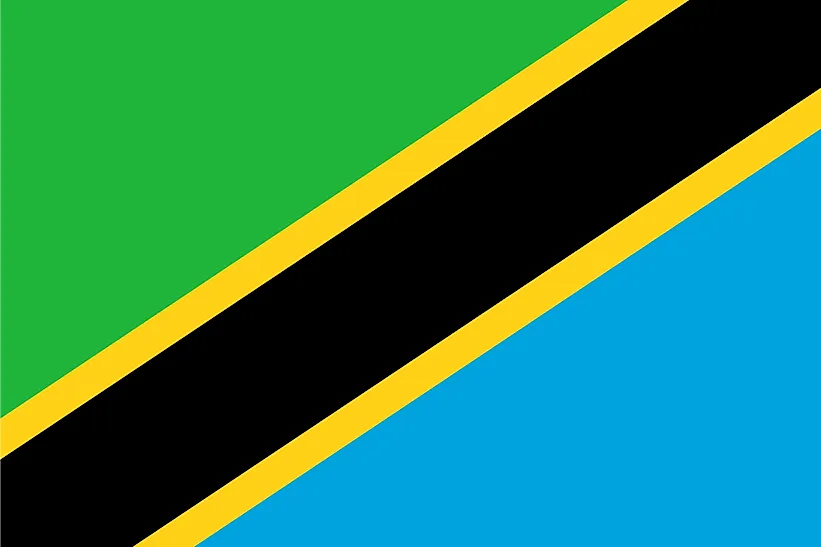
タンザニア
| 大陸 | アフリカ |
| 資本金 | ドドマ |
| 人口 | 52,482,726 |
| GDP | $151億円 |
| 一人当たりGDP | $3,100 |
| ダイヤルコード | +255 |
| ISOコード(2文字) | TZ |
| ISOコード(3文字) | TZA |
タンザニアについて
素晴らしい自然と多様な文化が共存する国、タンザニアへようこそ。947,303平方キロメートルに約6,300万人の人口を擁するタンザニアは、驚異的な野生生物遺産と豊かな文化的伝統を併せ持ち、東アフリカの宝石として君臨しています。
地理的特徴と自然の美しさ
タンザニアの地理はキリマンジャロ山からセレンゲティ平原まで多様な風景を包含している。アフリカ最高峰の山々、インド洋沿いの手つかずのビーチ、大地溝帯の湖など、見どころも多い。
サバンナの草原、熱帯雨林、サンゴ礁などの景観がある。変化に富んだ地形が多様な生態系を生み出し、有名なヌーの大移動やビッグファイブをはじめとするユニークな野生動物を支えている。
保護地域には、セレンゲティ国立公園、ンゴロンゴロ保全地域、キリマンジャロ山国立公園などがある。同国の自然保護への取り組みは、持続可能な観光を推進しながら、その驚異的な生物多様性を保全することに重点が置かれている。
文化遺産と伝統
タンザニアの文化は、120以上の民族が織り成す豊かなタペストリーを表現している。この国の遺産には、古代のスワヒリ海岸集落、独特の芸術形態、多様な伝統の平和的統合が含まれる。
伝統芸術には、マコンデの木彫り、ティンガティンガの絵画、さまざまな音楽スタイルなどがある。文化的な慣習としては、伝統的な儀式、躍動的なダンス、コミュニティの祝祭などがある。
タンザニア料理はその多様な影響を反映しており、ウガリ、ピラウ、様々な沿岸の魚介類を使った料理が特徴である。伝統的な「ウジャマー」(家族愛)と共同体の協力は、今も社会生活の中心となっている。
歴史の旅
タンザニアの歴史は、初期の人類の起源から様々な文明を経て現代に至る。オルドバイ峡谷での初期の人類の化石を含む重要な考古学的発見の本拠地である。
古代スワヒリ文明、アラブ貿易の影響、ドイツとイギリスの植民地時代、1961年のジュリアス・ニエレレによる独立への平和的移行など、重要な時代を含む。ウジャマー」社会主義の発展が、この国の近代的アイデンティティを形成した。
現代の経済状況
今日のタンザニア経済は、農業、鉱業、観光業に重点を置いている。天然資源と農業のポテンシャルが高い。
最近のイニシアティブは、インフラ整備、天然ガス開発、持続可能な観光産業の成長に重点を置いている。タンザニアの戦略的立地と自然の豊かさは、その開発努力を支えている。
国際関係とグローバルポジション
タンザニアは東アフリカやアフリカの組織に積極的に参加しながら、グローバルなパートナーシップを育んでいる。同国の安定性と天然資源は、地域的な影響力を拡大している。
ご存知でしたか?
- タンザニアにはアフリカで最も高い場所と最も低い場所がある(キリマンジャロ山とタンガニーカ湖の湖底)。
- セレンゲティでは世界最大の陸生哺乳類の移動が行われている?
- ザンジバルはかつて世界最大のクローブの産地だった?
- 独立以来、内戦を経験したことがないのですか?
結論
タンザニアは、自然の驚異と文化の調和が融合したユニークな国です。象徴的な野生動物から手つかずのビーチ、伝統的な風習から近代的な開発まで、タンザニアは自然遺産を守りながら進化し続けている。持続可能な開発や資源管理などの課題に取り組む中で、タンザニアは、自然保護と文化保護のリーダーとしての地位を維持しながら、前進を続けている。





